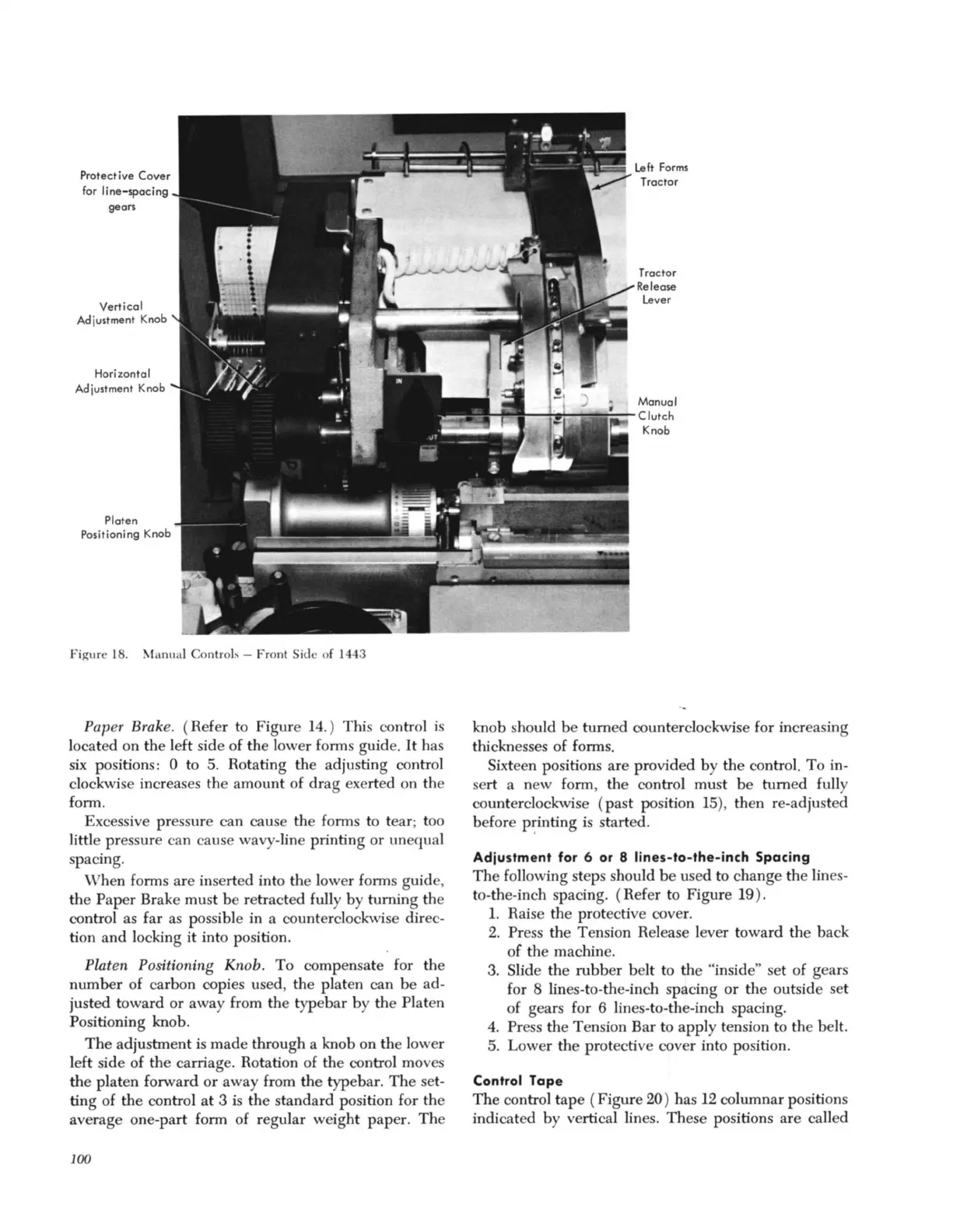Protective
Cover
for
line-spacing
gears
Vertical
Ad
ju
stment Knob
Horizontal
Adjustment Knob
Platen
Positioning Knob
Figur
e 18. 1anual Controls - Front Side of 1443
Paper Brake. (Refer to Figure
14.
) This control
is
located on the left side of the lower fonns gUide.
It
has
six
positions: 0 to
5.
Rotating the adjusting control
clockwise increases the amount of drag exerted on the
fonn.
Excessive pressure can cause the fonns to tear; too
little pressure can cause wav
y-
line printing or unequal
spacing.
"'-
'hen fonns are inserted into the
lo
wer fonns guid
e,
the
Pap
er Brake must be retracted fully by turning the
control as far
as
possible in a counterclockwise direc-
tion
and
locking it into position.
Platen Positioning Knob. To compensate for the
number of carbon copies used,
the
platen can
be
ad-
justed toward or away from the typebar
by
the Platen
Positioning knob.
The adjustment
is
made through a knob on
the
lower
left side of
the
carriage. Rotation of the control moves
the platen forward or away from
the
typebar.
The
set-
ting of
the
control
at
3
is
the standard position for the
average one-part fonn of regular weight paper. The
100
left
Forms
Tractor
Tractor
Release
lever
Manual
Clutch
Knob
knob should
be
turned counterclockwise for increasing
thicknesses of fonns.
Sixteen positions are provided by the control. To in-
sert a new form,
the
control must
be
turned fully
counterclockwise
(past
position
15
),
then re-adjusted
before
p~inting
is
started.
Adjustment
for
6 or 8
lines-to-the-inch
Spacing
The following steps should
be
used to change the
Iin
es-
to-the-inch spacing. (Refer to Figure 19).
1.
Raise the protective cover.
2.
Press the Tension Release lever toward the back
of the machine.
3.
Slide
the
rubber
belt to the "inside" set of gears
for 8 lines-to-the-inch spacing or
the
outside set
of gears for 6 lines-to-the-inch spacing.
4.
Press
the
Tension Bar to apply tension to the belt.
5. Lower the protective cover into position.
Control
Tape
The
control
tape
(Figure
20 ) has 12 columnar positions
indicated
by
vertical lines. These positions are called
